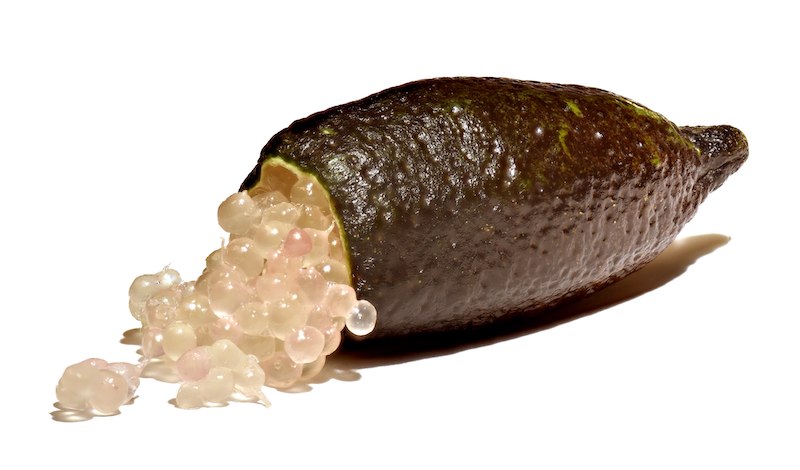Why limes are key

I have been writing about food for more than a dozen years and lived within a three-hour drive from the Florida Keys for more than 30 years. I frequented farmers markets when I lived in South Florida, sampling as much produce variety as I could. I consider myself a Key lime pie connoisseur. But I’ve never bought a Key lime — from Florida.
After diving into a research black hole (so fun!), it’s easy to see why. I’d have to have been purchasing produce in the early roaring ’20s.
Although Key limes are native to South Asia, they were introduced in the Florida Keys in 1838 and became naturalized there, according to the University of Florida, Institute of Food and Agricultural Sciences Extension. In the late 19th century through the turn of the 20th century, a small commercial Key lime industry was active in the Florida Keys. Then the Great Miami Hurricane in 1926 destroyed most of the trees, and commercial production never fully recovered.
Key limes, significantly smaller than the U.S.’ more mainstream Persian/Tahitian lime variety, are slightly yellow when ripe and have more seeds. Their fragrance is more aromatic, and their juice has floral notes, although it can be more acidic.
Learn more: Limes on PMG
Most limes are believed to have originated in the Northeast India, Indo-China region, and followed westward trade routes to the Mediterranean and onward to the Americas, according to the U.S. Department of Agriculture.
There are three major commercially produced lime varieties:
- Persian lime: (Citrus x latifolia) Also called Tahitian, Shiraz limoo, bearss (seedless). Persian is the most widely produced lime globally. Mexico is the largest producer.
- Key lime: (Citrus x aurantiifolia) Also called West Indian, bartender’s, omani or Mexican. The Key lime is produced heavily in India and parts of Mexico, where it’s the preferred variety for domestic use.
- Makrut lime: (Citrus hystrix) Also called kaffir. This one is a lesser-produced but well-known lime variety popular in Southeast Asian cuisine. The aromatic leaves are used in cooking too.
Shoppers (really) love limes
The last decade or so, U.S. consumers have shown they want more and more limes — the Persian variety, at least. It’s a unique phenomenon not seen with oranges and grapefruit.
The demand may stem from the rising interest in Latin and South Asian cuisines, the burgeoning Hispanic population and the desire for limes’ health-promoting properties. After all, limes were used to prevent scurvy in sailors in the 19th century. It’s why the British sailors were called “limeys.”
Fresh orange and fresh grapefruit consumption declined by 7.3% and 44% respectively between 2010 and 2020, according to the USDA. Meanwhile, Persian lime per capita consumption grew by 70%, from 2.51 pounds in 2010 to 4.27 pounds that same decade.
But since 2003, the U.S. has depended completely on imports to supply its Persian lime market.
When Florida lost its limes
Florida’s Persian lime heyday began in the 1930s, concentrated in Miami-Dade County.
At one time, Florida was the main supplier of Persian limes in the U.S., with a high of 2.76 million bushels in the 1985–1986 season.
When Hurricane Andrew, a raging Category 5 storm, struck the primary agricultural production area in south Miami-Dade in August 1992, it destroyed about 70% of the production area. Only 1,900 of 6,300 acres were left standing.
Check it out: In-depth stories and beautiful art of PMG magazines, the digital editions
The Persian lime industry hadn’t recovered yet before it was hit with citrus canker starting in 1995. Official data collection about the Florida lime industry ended in the 2002–2003 season, as all the commercial Persian limes in South Florida had been removed.
In the nearly two decades since U.S. production stopped, lime growers in Mexico and other countries have scored well in the U.S. market, with fresh lime imports more than tripling between 2002 and 2020, according to the USDA, jumping from 224,703 to 680,405 metric tons in that time. Mexico is by far the dominant supplier of the fruit to the U.S., accounting for more than 98% of the total imports during this period.
Because of the economic importance that Persian limes had to Miami-Dade County (before Hurricane Andrew, they would be valued at $53 million in 2022 dollars), and because of growing consumer demand for the product, which nearly doubled in the last decade, interest has been growing to reintroduce Persian limes in the county.
But HLB and citrus canker bacterial diseases, along with Mexican competition, have dampened this prospect. Still, it’s always a good idea to diversify source options, considering possible future production and supply chain disruptions. With necessity comes innovation.
Citrus caviar
Enter the finger lime, also known as the “caviar of citrus.” Beloved by chefs, foodies and growers, can it become mainstream anytime soon(ish)?
After all, the long, slender finger lime is an HLB-tolerant Australian native. Besides that hardiness, the most exciting part is the round or teardrop-shaped juice vesicles that burst out when the fruit is cut, spilling out in all their splendor.

The UF/IFAS citrus improvement program has released two improved finger lime cultivars — the UF SunLime and the UF RedLime — for Florida growers to produce as a specialty crop, said university citrus researcher Manjul Dutt in his 2021 Citrus Research Summaries report.
Under Central Florida conditions, both cultivars produce high amounts of anthocyanins in both the juice vesicles and skin, he said.
“We anticipate that locally grown finger limes can be a useful addition to the Fresh from Florida portfolio and can help bolster local food systems leading to increased sales to restaurants and businesses,” Dutt said.







